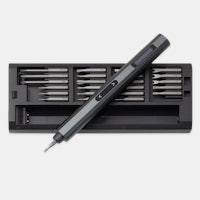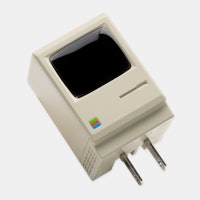Click to view our Accessibility Statement or contact us with accessibility-related questions




Approaching New Magic Drafts - Massdrop East / West: Article #2

search
close
Sort by: Newest
keyboard_arrow_down
Let’s get the conversation started!
Be the first to comment.
PRODUCTS YOU MAY LIKE
Trending Posts in More Community Picks

Graham88
Completely surprised by the lack of blade diversity here on Drop...
I’ve been a collector of Blades since before my teens, and a retailer coming up on 15… or maybe 20 years. Drop has really been kind of an interesting experience for me, because I do occasionally get to see some unusual tech and sometimes EDC items that otherwise I might not have been aware of. And maybe it’s because I have a deep love of cutlery and bladed weapons, but I find myself trolling through the site looking at it what’s available; and it’s just it’s pretty much the same. And the bladed community here is just always confused me.. every single knife is about the same, they’re almost all drop points and although the handle materials change and brands change.. it’s really just the same knife over and over and over again... occasionally you’ll see a tanto or a slight variant; but rarely… and almost never a serrated blade. And I’m just deeply amazed at this diversion of serrated blades. And I’m just surprised there isn’t more of a request for diversity here.... and I...
Mar 12, 2020
JellyDPhoto
Can we get Sony E-Mount or other mirrorless camera options please..
Would be nice to see some Sony E mount full frame cameras on here. I currently shoot with a A99 and they killed the lense path for better or more option lenses and now is all E-Mount. 🤔
Jan 13, 2020
RayF
There Are Pandas, and Then There Are Pandas.
And this isn't either of them! The Pandas we're talking about here, are watches, not bears. And what got me thinking about them (again) was a link posted this morning by @cm.rook who pointed a few of us to the very attractive (and not terribly priced) Yema "Rallygraph" Panda which, in it's most traditional arrangement, looks like the one on the left, but can also be had in the version on the right: The model on the left is a true Panda, while the model on the right is called a reverse Panda. The reason for that distinction is clear--Panda bears, only come in the first arrangement. Now at this point, everyone should be thinking about the most well-know Panda, The Rolex Panda, which is actually a Daytona, and among Rolex Daytonas, the most famous of which is the Paul Newman Daytona, which was famous first, because it was Paul's, and second because it sold at auction for $17.8 million (US Dollars). The story of that auction is well-known so I'll only...
Nov 8, 2019







Hey, I'm Ari Lax of Magic: the Gathering Pro Team Massdrop West, and I think drafting is one of the best forms of Magic. It maximizes the best parts of the game: decision making that changes your deck, constant novelty, and the combat system. Today I want to talk about drafting in general, and specifically how to approach drafting a new set.
Maybe you haven't had a chance to draft Aether Revolt yet and you hop over to a local store for Friday Night Magic. Maybe a box of Eternal Masters just dropped into your lap. Maybe a cool old format like Innistrad shows up as a flashback queue on Magic Online. Regardless, at some point you will draft a new format for the first time.
Drafting already is a decision intensive process, and adding a layer of having to figure out what everything is doing as you are picking it up makes it more than twice as hard. Here are some quick guidelines to demystifying the process a bit.
1. Read Some Spoilers
Quick, pick one pack one Skyship Plunderer or Shock?
How can you even come close to making a decision here without context? If the ability on Skyship Plunderer does nothing, it is definitely not a first pick card. If it was a 2/1 flier that got a +1/+1 counter whenever it dealt damage, it would be insane. Are there easy ways to get +1/+1 counters on creatures in Aether Revolt? If you want to go deeper it's even possible Shock is bad in a format if the small creatures don't matter, but a flier might be game breaking. Without prior experience and seeing things play out, the best thing you can do is actually read a spoiler and know what kind of cards are in the format.
You don't need to get into any of the complicated stats I like to look at. There are layers and layers of context in a set, and even the basic ones are big. For example, there isn't any Improvise in white or green in Aether Revolt. You now know that if you start off a draft solidly in white you don't want to be taking Servo Schematic as you don't need random low cost artifacts. Or in Kaladesh there was basically no energy in white or black so cards like Decoction Module or Dyanavolt Tower weren't things you wanted to try and support in those colors.
To use the above example again, maybe there aren't any good ways to get +1/+1 counters on creatures outside of green. Now imagine you are U/R and you have that decision in pack two. You know you won't be getting many ways to exploit the Skyship Plunderer, so the pick is Shock. If you are G/U with a couple of Renegade Maps and making the same decision about a splashable removal spell and the Skyship Plunder, the pick is then easy to figure out in the other direction. That's the power of context even a quick spoiler read can give you.
2. Don't Force A Deck
This is one of the hardest habits to break for Limited. Magic is a game about customization and preferring aggro or control or combo is just normal. Maybe you just really like being the person with Lava Spike in your deck. It's also really hard and there's nothing wrong with knowing you are just going to play a Grixis Control deck better than weird combo like Dredge or an aggro deck like Burn.... for Constructed.
That just doesn't work with Limited. You have to play with the cards you get. If you open Winding Constrictor and try to force G/B Counters when the person next to you is just taking all the good green cards you will have a terrible deck. If you really want to draft a control deck but are in a flashback Zendikar draft you are going to have a bad time.
Go into the draft not looking for a scripted experience, but for a choose your own adventure based on what it in front of you. You can still have the hope of doing your cool thing, but if it just isn't there you will just be disappointed.
3. Look for Cards with Impact
A big part of draft is finding an open color to get passed good cards in, but a color not being open doesn't always mean there aren't cards of the color coming to you. One easy trap that ends the same way as forcing a color is just selecting cards with a color and being OK with it because they are “playable”.
Oh look, this pack has two black cards left, I'll take Alley Strangler. I guess I'm in black because I have four black cards now: a Daring Demolition and three random creatures. Oh no, I lost all these matches because I played one removal spell and then the rest of their cards still beat all my mediocre creatures.
What cards matter isn't something you are going to know for your first draft, but guessing is easy. The old adage of obviously powerful rares, removal, real evasion creatures, and things that just have lots of power and toughness for their cost is a good start. These are the cards you should be watching for early, and not just the ones that are the same color as the cards you have already taken. You are allowed to switch colors early if it means your end deck has overall better spells to cast.
Note: If you are drafting an older set (pre-Theros) this might not apply. With sets now the last few commons in a pack are things like Cowl Prowler that actually do something. Compare to classics like Chimney Imp and you can understand why old draft was a lot more about finding 23 cards to put in your deck to begin with.
4. Set A Hard Line to Lock In
One of the things that happens with a new set of cards is decision overload. You haven't seen all of these cards a dozen times so you have to make educated guesses on how good cards are. This is especially daunting in the first few picks where there can easily be a third of the remaining cards you might consider taking.
On the flip side of the above point about trying to find the impactful cards and choosing your direction based on that, it does have the issue where you are making these decisions for more and more of the draft. I know personally this can lead to trainwrecks where you keep hemming and hawing about what colors you are, never settling into two, and ending up with a three color pile of cards with no additive synergies and bad mana. Staying too open to new cards can be just as much of an issue as not being willing to adapt to what is passed to you.
Before the draft, make a guideline you will try to follow. For example, by pick six, I will know one color in my deck. By pick two of pack two, I'm going to know both of my colors. If something crazy happens don't feel bad about breaking your guideline, but ask yourself if it is really that big of a deal first. A pack two pick four Chandra's Revolution is just a common removal spell. A pack two pick four Freejam Regent when you only have three black cards might just be better than everything you already have.
5. Don't Be Afraid to Try Things
One of the best parts about trying cool synergistic things is that it ties well into the above concept of cards with impact well. Hightide Hermit by itself isn't going to be better than a random three cost creature, but if that four energy turns into something useful because your deck is all about energy your have made a good card out of a bad one.
If you start seeing the beginnings of a bigger plan for your deck, see if you can go with the flow and get there. This is a bit of forcing the archetype in retrospect: one you know the cards are coming to you that you need, then you can start making more and more drastic decisions to move in that direction. If you started a Kaladesh draft with a Thriving Rhino, then got passed a Fabrication Module, suddenly your third pick choice of Attune with Aether over Glint-Sleeve Artisan is easy. This also helps with the decision paralysis I mentioned earlier. If you have a theme, a lot of decisions can be made by which of the cards supports it best.
There's also huge fun value gained here. If you are going to draft the same format another twenty times isn't it good to know for later if Electrostatic Pummeller combo works? If you are going to draft this format a couple times isn't it worth seeing if one of those might be the Panharmonicon deck or would you rather just have another G/R deck that is forgettable in the long term?
The Caveat: Generally a deck with a theme will have a bunch of support cards and a few big payoffs. There aren't a ton of cards that do what Gearseeker Serpent does, but any card with the type Artifact that costs two mana is close to Consulate Skygate. Consider what happens to your deck if you draw just one half of the equation. Is it still good? Can you keep the game going long enough to find the other half, and if you do is that still good then? Can your deck win off a five card hand if you aggressively mulligan to your game plan? If the answer is no to most or all of these, you probably want to err on the side of doing normal “play creatures, cast spells” Limited with some support for your cool theme as opposed to building a pure theme deck.
6. Change It Up
For 99% of people, your first draft of a format will not be in an environment where deck lists are used. It will be kitchen table, a FNM, after a prerelease, or in a Magic Online League.One cool thing specific to Limited events without deck lists is that while you are limited to the cards in your draft pool, you aren't required to present the same base deck between rounds.
Realize after a couple games your deck keeps sideboarding in that Aradara Express as it needs a win condition? Cut that filler three cost creature for a big train. Realize your six green cards in your red deck aren't good and the six white cards in your sideboard might be better? You are now a R/W deck and 3-0ed the draft (true story from a recent Aether Revolt draft).
Maybe after a couple more games your change didn't work. Guess what, you learned something and that's half the point!
Note: Just to be explicitly clear here, this is just editing your deck with cards you also drafted. You can't add cards from outside the draft, that would be cheating.
7. Take Another Look
One of the biggest reasons I love to play Limited and really Magic in general is that it lets you learn things. Even after drafting a format dozens of times, I find it almost impossible to say I navigated a draft perfectly. There were always different things I could have done or changed I could have made that I realized after a few picks, deck building, or even a match or two.
After your matches, flip through the deck you drafted. What cards were super important? Were they ones you didn't expect to be that good? Which ones ended up not carrying their weight? Did any of your games focus on things you didn't expect them to?
Even if you never draft the format again, that doesn't mean the things you learn aren't applicable elsewhere. There's always another first draft waiting to happen.